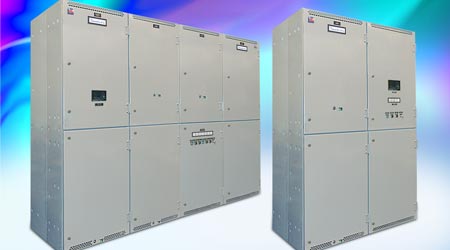« Facilities Technology Briefs Home /
Power & Communication
Circuit Breaker Transfer Switches Feature Smaller Footprint - Russelectric Inc. - Facility Management Product Release

Russelectric Inc.
website
| Company information
Russelectric's newly redesigned Medium–Voltage (5-15kV) Circuit Breaker-Type AutomaticTransfer Switches and Bypass/Isolation Switches now have 20-50% smaller footprints than before. UL tested, listed, and labeled under UL 1008A and suitable for use in legally required alternate power systems, these switches transfer electrical loads between preferred and alternate power sources through the carefully controlled opening and closing of circuit breakers. Switches can be configured for open- or closed-transition transfer, and though designed for unattended operation, they include controls for manually-initiated operation. All switch functions are controlled by Russelectric’s powerful and versatile RPTCS programmable microprocessor-based control system. These switches also meet or exceed stringent IEEE, NEMA, and ANSI standards.
For either the open- or closed-transition configuration, if the preferred source is lost, the control initiates an open-transition transfer to the alternate source by tripping the preferred source breaker and closing the alternate source breaker. When open-transition retransfer is selected, the switch first verifies that the preferred source has returned, opens the alternate source breaker, and then closes the preferred source breaker. When closed-transition retransfer is selected, the switch first performs a synch check to ensure that the preferred source is in synchronism with the alternate source, then momentarily parallels the two sources by closing the preferred source breaker and opening the alternate source breaker.
Medium-Voltage Circuit Breaker-Type Bypass/Isolation Switches provide all the functions of an automatic transfer switch plus the ability to bypass power from live source to load in the event the transfer switch becomes disabled. They are also designed to allow isolation and de-energization of the automatic transfer breakers for maintenance, testing, and repair. The operator can easily choose between load-break bypass and no-load-break bypass by means of a selector switch on the front of the control cubicle.
RELATED CONTENT
Content Category: Power & Communication
FEATURES:
QUICK READS:
posted: 8/8/2016








